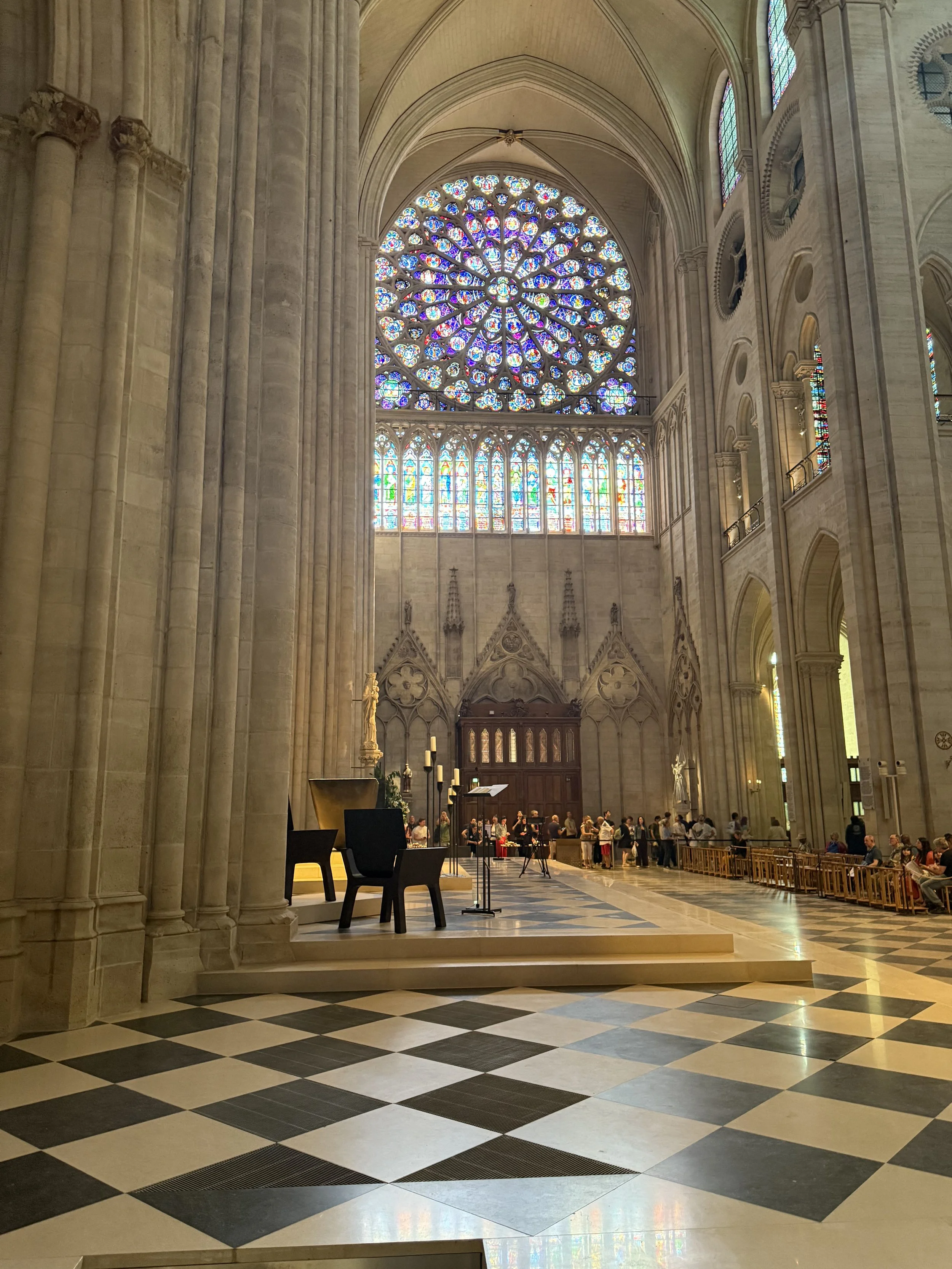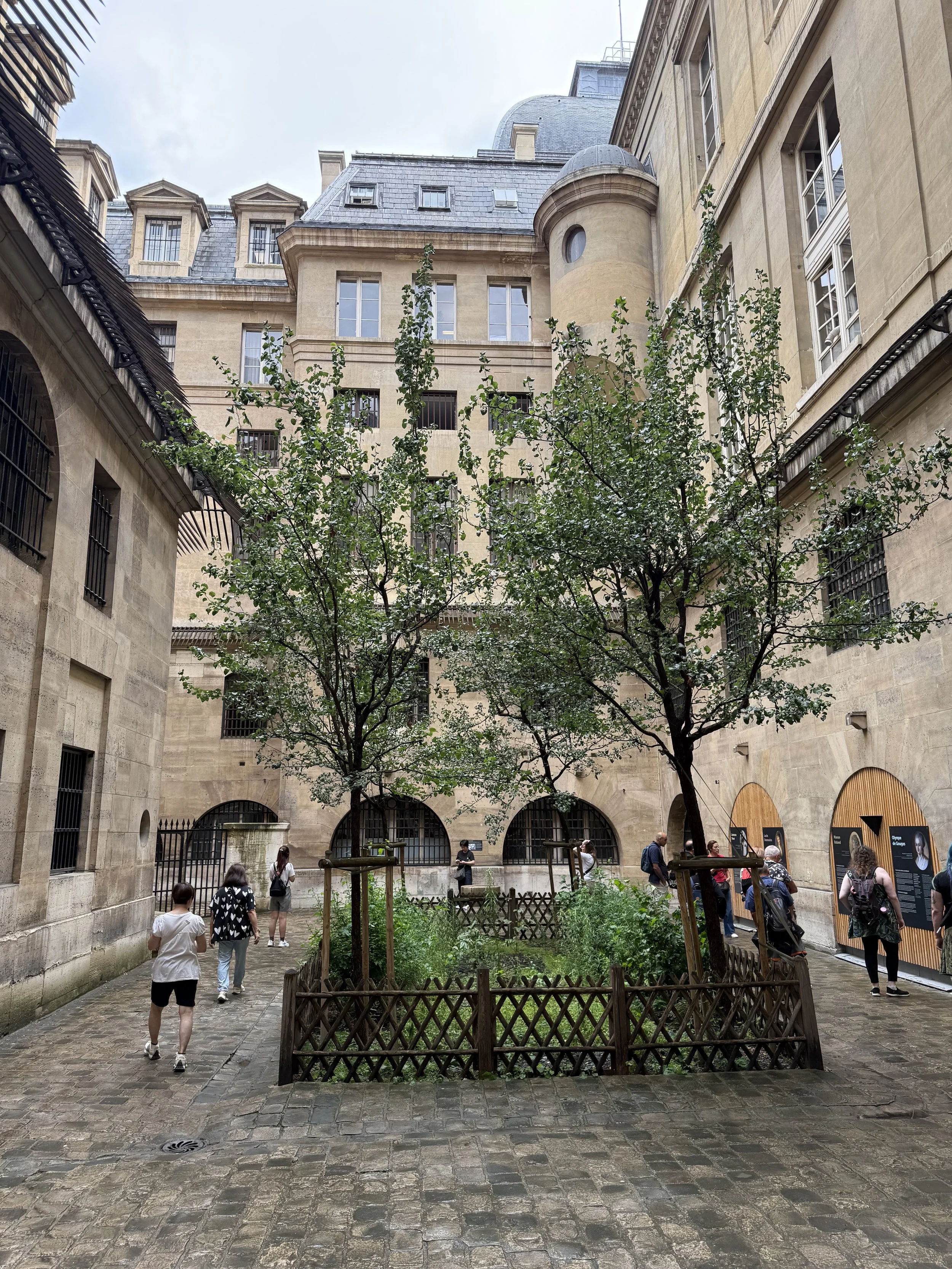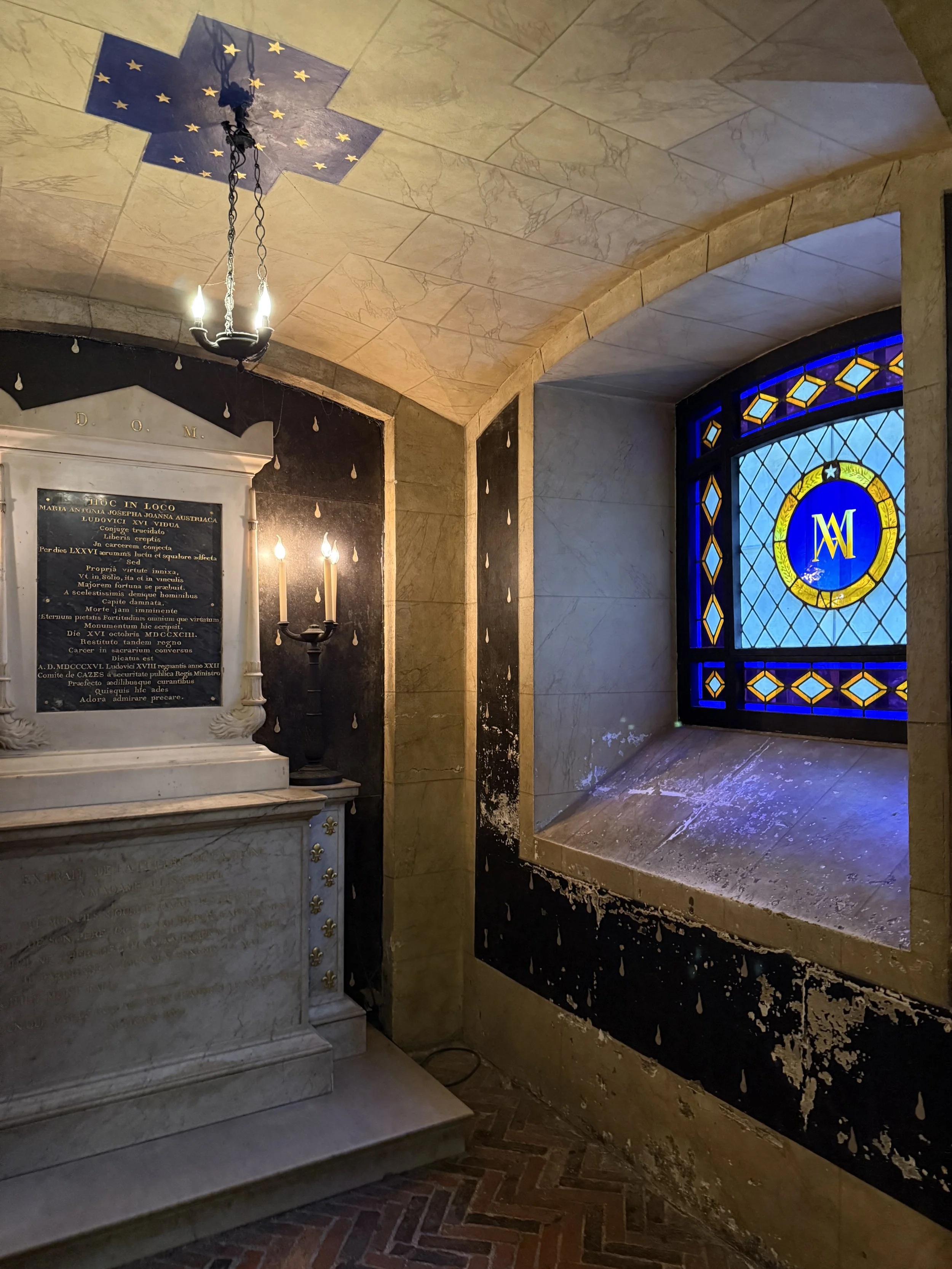Before coming to Paris, I expected elegance, high fashion, and exquisite bakeries. Paris is elegant, yes, but it’s also bold, complex, and deeply rooted in history. What struck me first was the atmosphere. Paris immediately had a different energy than any other place I’ve been, especially London. Where London often felt more polished and proper, Paris feels more raw and real.
Inside of Notre Dame Catherdral
The social norms reminded me of home on the East Coast. People tend to engage less in unnecessary small talk, valuing directness over surface-level interactions. Still, I appreciated the honesty in it. One thing that differs from the bustling lifestyle of America is the lack of hustle culture here. Instead, there’s a focus on taking things one day at a time and appreciating the moment. There’s also an undeniable sense of pride that runs through Paris. It’s quiet, yet obvious, in how carefully history is preserved and in the seriousness with which language, food, and identity are treated. This sort of national pride is alluded to by Dickens when he explores how people felt an obligation to the Republic during the revolution.
Religion still feels central to the city’s identity. Cathedrals and chapels are everywhere, most notably Notre-Dame, of course, but also countless smaller churches scattered throughout the city. The architecture of Notre-Dame was breathtaking. While Dickens doesn’t directly identify himself as a Christian, I felt like the ideas of God and religion play a symbolic role in how he explores morality, redemption, and sacrifice. Dr. Manette being “recalled to life” from the years that he spent in prison by rekindling his relationship with his daughter Lucie mirrors biblical themes of rebirth. Additionally, Sydney Carton’s testimony of self-sacrifice, where he dies in the place of Charles Darnay, echoes Christian ideals of suffering and laying down one’s life for another. Dickens frames this act as one of moral and even spiritual transcendence, suggesting that redemption is possible for anyone, even for someone like Carton who deemed himself unworthy.
Palace of Versailles
I especially felt the weight of history at the Palace of Versailles. It felt overwhelmingly grand with its gold, high ceilings, intricate artwork, and vast, beautiful gardens. While physically extravagant, what stood out to me was the sheer amount of wealth held within the palace walls, a contrast to the reality of the poor who were struggling to survive as the monarchy lived in luxury. It makes sense to me that the Revolution followed. Versailles is beautiful, but it also feels detached from reality. It reminded me of the class divisions in A Tale of Two Cities, where the aristocracy thrives in luxury while the poor starve. History truly repeats itself.
I also noticed a sense of admiration for Napoleon at Versailles. The number of people crowding to get a snapshot of his bed or murals made it feel like he was being idolized. His legacy is complicated; while many criticize him for his invasions, in Paris, he is still remembered with respect. The fact that his tomb has become a major attraction and a monetized destination says a lot. While one can be seen as a hero and savior to some, they can simultaneously be an enemy to others.
Another recurring theme during our first week was the criminal justice system of nineteenth century France, particularly through our visits to Place de la Concorde and the Conciergerie. These experiences led me to reflect on the question: Who deserves justice and why? In class, we discussed the Declaration of the Rights of Man and the Citizen, which guaranteed all individuals the right to “liberty, property, security, and resistance to oppression.” Yet in practice, women, children, foreigners, and servants were often excluded and discriminated against.
Women’s courtyard
Dickens reminds us that revolutions are not just political, they’re deeply personal. Characters like Madame Defarge show us how grief and trauma are inseparable from history. Walking through the women’s courtyard at the Conciergerie, I felt that same sense of personal loss that is often dimmed by the intensity of political conflict. These weren’t just historical figures; they were daughters, sisters, mothers, and fighters. I especially appreciated the garden because it centers the voices of women so often left out of traditional narratives. It was striking to learn that this section of the Conciergerie is the least altered part of the site since the French Revolution, as if the stories there refused to be erased.
In both A Tale of Two Cities and Les Misérables, women’s perspectives are frequently sidelined, so I valued the chance to learn about the stories of real women who were actively fighting for justice during this time. One woman who stood out was Olympe de Gouges, memorialized in the garden. I admired that she called herself a feminist long before it was generally accepted, embracing Enlightenment ideals and writing boldly in defense of women’s rights. The way she was imprisoned in the Conciergerie and sentenced to death simply for standing up for democracy is a reminder of how dangerous it has always been for people, especially women, to speak out against the status quo. It's disheartening that this kind of threat to democracy is still visible in the world today.
Of all the places we visited during the first week, the Conciergerie felt the most somber. It was here that Charles Darnay believed he would spend his final days, and standing inside those walls, I was transported to envision his fear. Cold stone corridors, echoing footsteps, narrow hallways, and small windows barely letting in light, the building seems to close in on you. It doesn’t try to romanticize history. It forces you to feel it.
One of the most haunting spaces in the Conciergerie was Marie Antoinette’s cell. It’s quiet and dimly lit, almost frozen in time, a stark contrast to the grandeur she once lived in at Versailles. Standing in the small stone chamber where she awaited her execution, I couldn’t help but feel the weight of history sink in. Seeing it in person made me think of A Tale of Two Cities, where Dickens doesn’t shy away from the brutal realities of the French Revolution. Marie Antoinette, like many aristocrats, is a symbol of the inequality that drove the revolution forward, yet her final moments, like Charles Darnay’s imprisonment, remind us that even those in power are vulnerable when systems of justice become tools of vengeance. Dickens shows how the line between justice and revenge can quickly blur. Like Darnay, she was condemned not just for who she was, but for what she represented — a reminder that revolutions, while rooted in justice, often end in suffering.
A Tale of Two Cities warns us that if inequality and injustice go unchallenged, violence doesn’t just happen, it becomes inevitable and normalized. Dickens brings us through a revolution that begins with ideals and ends with a spectacle, where justice is reduced to performance and the guillotine becomes a routine event. Standing in Place de la Concorde, where the guillotine once stood, I couldn’t help but think how quickly hope can turn into horror. Today, it’s a stunning square that encompasses you, surrounded by fountains and monuments, but beneath that elegance is a history soaked in fear. In the novel, the guillotine is ever so casually referred to as the National Razor that shaves close. That’s the danger Dickens is highlighting: when killing becomes ordinary, revolution loses its moral center. It was haunting to stand there and realize that what began as a fight for liberty and equality ended in pain and persecution.
Paris made the French Revolution feel real in a way I hadn’t expected. The revolution was more than a series of historical events, but lived experiences, full of pain, justice, and meaning. In A Tale of Two Cities, Dickens explores what happens when society fails to protect the vulnerable, when justice becomes revenge, and when history forgets the humanity of its people. Visiting Paris helped me see how these themes aren’t limited to the literature; they are alive in the architecture, the memorials, and even the somberness of places like the Conciergerie. Like the novel, Paris is a city where the past never disappears. It lingers to warn, remind, and demand to be remembered.



